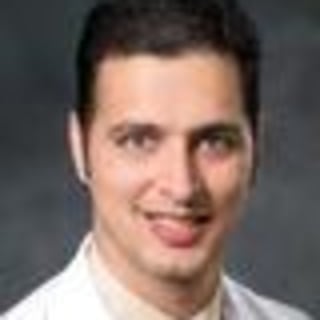
This year, the Heart Rhythm Society (HRS) held its 40th Annual Scientific Sessions in San Francisco. The theme of this year’s opening plenary address was “Celebrating Our Past, Forging Pathways for Our Future” and featured well-known NPR podcast host Guy Raz.
From the opening plenary, it was clear that the 2019 Scientific Sessions was going to be different. Gone was the Ventricular Tachycardia Summit and instead brand new Special Sessions were introduced: the Digital Health and Emerging Therapeutics Summit.
The Emerging Therapeutics Summit was divided into four sections: innovations in implantable devices, developing chamber specific myocardial preparations for drug and disease testing, future of arrhythmia mapping, and technical advances in ablation therapy.
Each section featured a patient case as an illustrative example of the current state of therapy and this served as a point of departure to demonstrate how advances in technology, as well as a better understanding of relative efficacy of available therapeutic options, will lead to better patient outcomes in the future.
In the cardiac resynchronization therapy (CRT) portion, Marye Gleva, MD from Washington University in St. Louis, presented a case of a patient who received a CRT defibrillator and then discussed how algorithms to predict future heart failure hospitalizations, algorithms to determine effectiveness of resynchronization, and algorithms to enable multi-site or LV-only pacing may lead to better therapeutic options in the future. She also discussed the potential option to implant a cardiac contractility modulator (CCM), or a device that delivers pacing pulses during the ventricular absolute refractory period that has the potential to improve outcomes in cardiomyopathy patients. She shared research on a proposed algorithm on how to incorporate this new device into current practice.
The Digital Health session also featured a novel format with a unique collection of presenters who previously would never be expected to present at Scientific Sessions. One panel featured venture capitalists and entrepreneurs who discussed how to make a successful digital health company. I thought the most interesting panel featured a cardiac nurse, an electrophysiologist, a representative from the FDA, an engineer from Medtronic, Chief Medical Officer at AliveCor Jacqueline Shreibati, MD, electrophysiologist and host of the This Week in Cardiology podcast John Mandrola, MD, and an AFib patient named Melanie True Hill who manages the patient forum StopAfib.org.
Titled “Digital Health Population Tools for Arrhythmia Detection: Retail and Medical Grade Equipment” and chaired by Sana Al-Khatib, MD from Duke, this session featured a lively discussion on the pros and cons of technology usage to detect atrial fibrillation. Nassir Marrouche, MD, an electrophysiologist from the University of Utah, stepped up to the microphone from the audience and pointed to the potential for earlier detection of asymptomatic atrial fibrillation and greater engagement of patients. Mandrola countered with his concerns about the dangers of false reporting and causing unnecessary alarm. In many ways, it was Hills who acted as a sort of mediator by encouraging individual patients who were interested in this technology to have an informed discussion with their physician to determine if this was appropriate for them.
Another highlight of the morning session was a presentation by Leslie Saxon, MD from the USC Center for Body Computing. She and her team at USC developed an app that would allow a patient with an implanted cardiac device (pacemaker or defibrillator) to receive device report data form their physician in manner that was clear, relevant and understandable. The data could be tailed to patient’s clinical situation and there was even the ability to send the patient a video of their physician explaining certain abnormal findings, such as a defibrillator shock or a new diagnosis of atrial fibrillation.
The afternoon sessions were equally as interesting as the morning. Mintu Turakhia, MD, an electrophysiologist at Stanford, spoke at the "Wearables and Apps: Show Me The Data" session. He highlighted his work on the recent Apple Watch study. Regardless of your thoughts on the Apple Watch study, you have to respect the ability of this technology to recruit a large number of patients in a short period of time. This technology is clearly going to change the way we do electrophysiology research studies and facilitates the collection of data outside of clinical encounter. In a session titled "AI in EP: Computational Approaches; AI in Hospital and AI to Classify Arrhythmias" that featured Paul Friedman, MD, an electrophysiologist and the chair of Cardiovascular Medicine at Mayo Clinic. Friedman highlighted his fascinating work on developing an artificial intelligence (AI) system to identify subtle clues during a sinus rhythm ECG that can detect if a patient has a history of atrial fibrillation.
An interesting session titled "The Role of Tech Giants in Healthcare" featured speakers from Facebook, Omron, Samsung, and GoForward. The practical aspects of current integration of digital health tools into clinical care were highlighted during the "Success Stories: Driving Digital Health Pathways into Clinical Care at Scale" session. The most interesting aspect of this session was hearing how advances in technology are allowing patients to become more engaged in their own care and basically treat themselves, with some direction from their physician. The final session of the day featured a live virtual visit with a patient who has been using her smartphone to monitor her ECG post ablation.
Overall, the inaugural Digital Health and Emerging Technology summits were thought-provoking opportunities to hear relevant perspectives on the role of technology in health care from people who are not clinicians. I think both clinicians and non-clinicians alike walked away from this experience with a new appreciation of the nuances each other has to deal with in their daily existence. I hope that the Heart Rhythm Society keeps these formats for future Scientific Sessions since this will increase the relevance of this meeting in this ever-evolving digital world.
Sanjaya Gupta, MD, FACC, FHRS is a cardiac electrophysiologist at Saint Luke's Mid-America Heart Institute and an assistant professor of medicine at the University of Missouri-Kansas City School of Medicine. He Tweets at @SanjayaKGupta.







